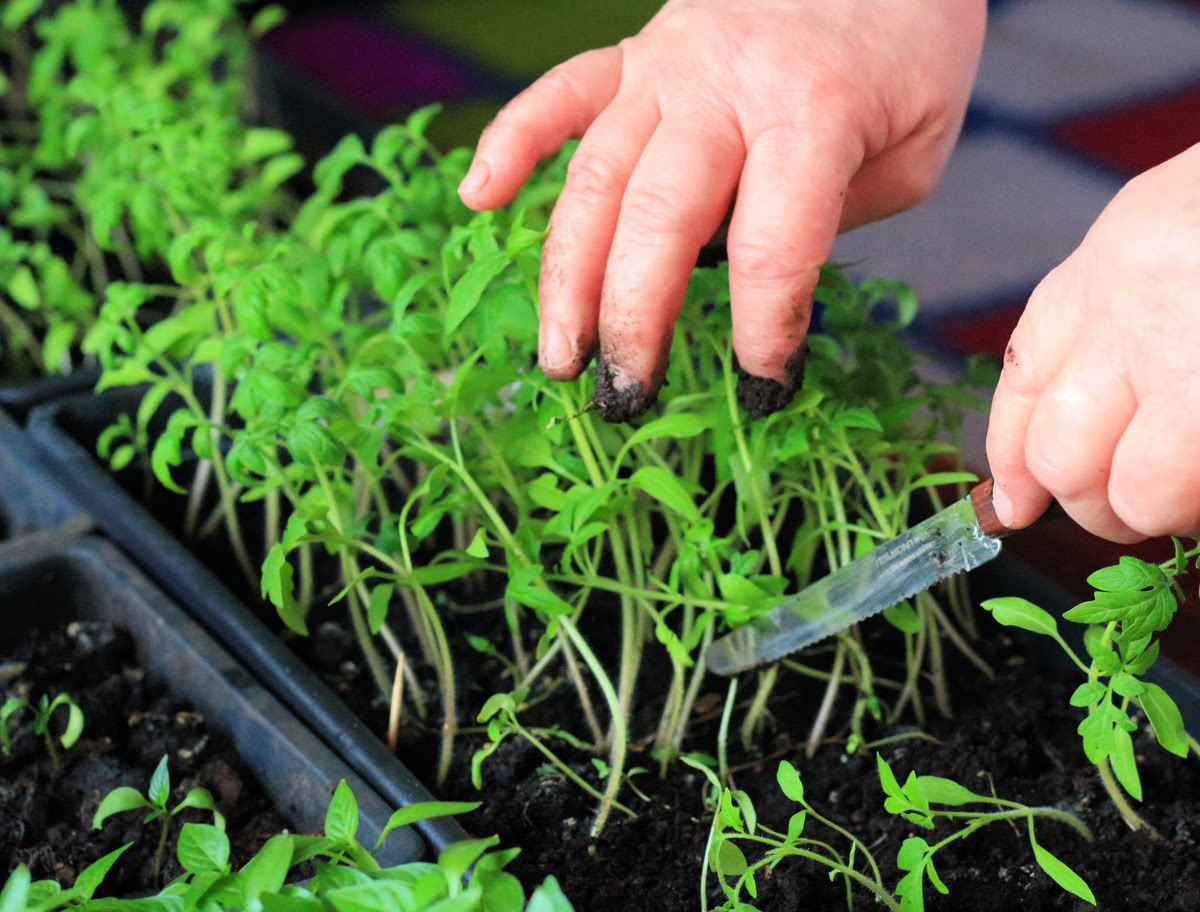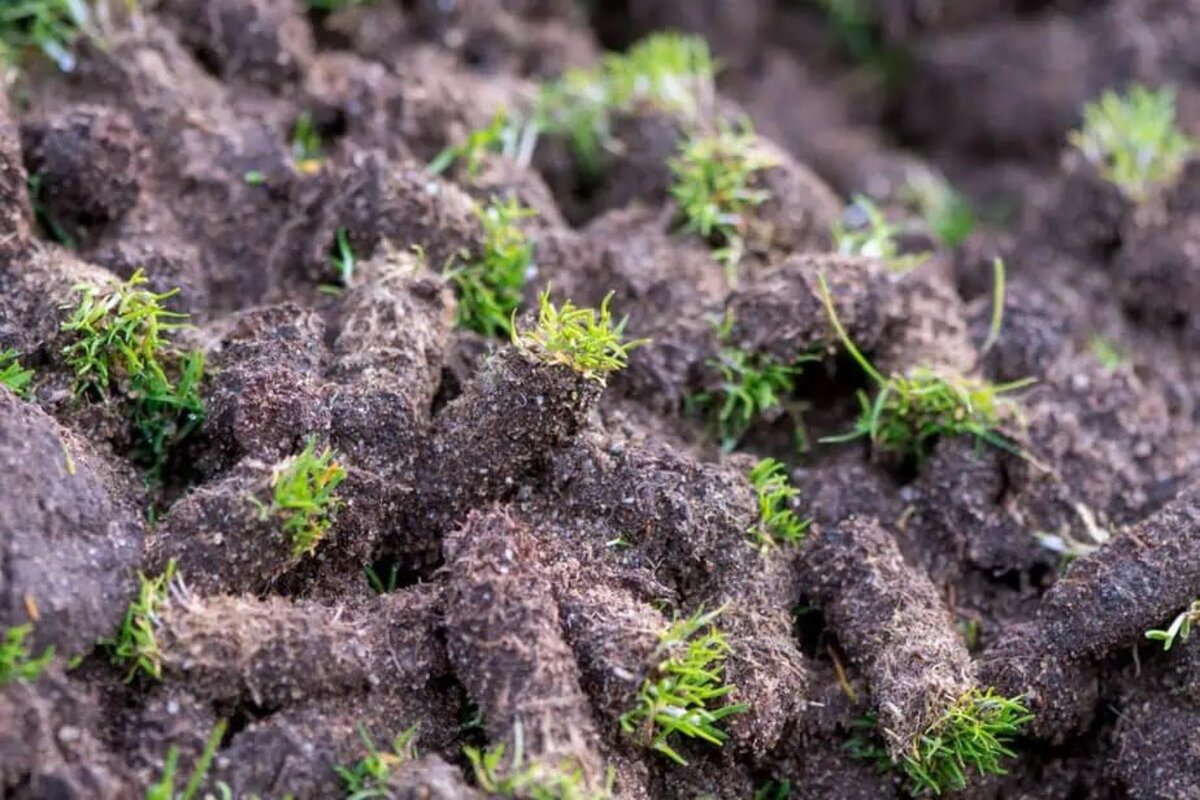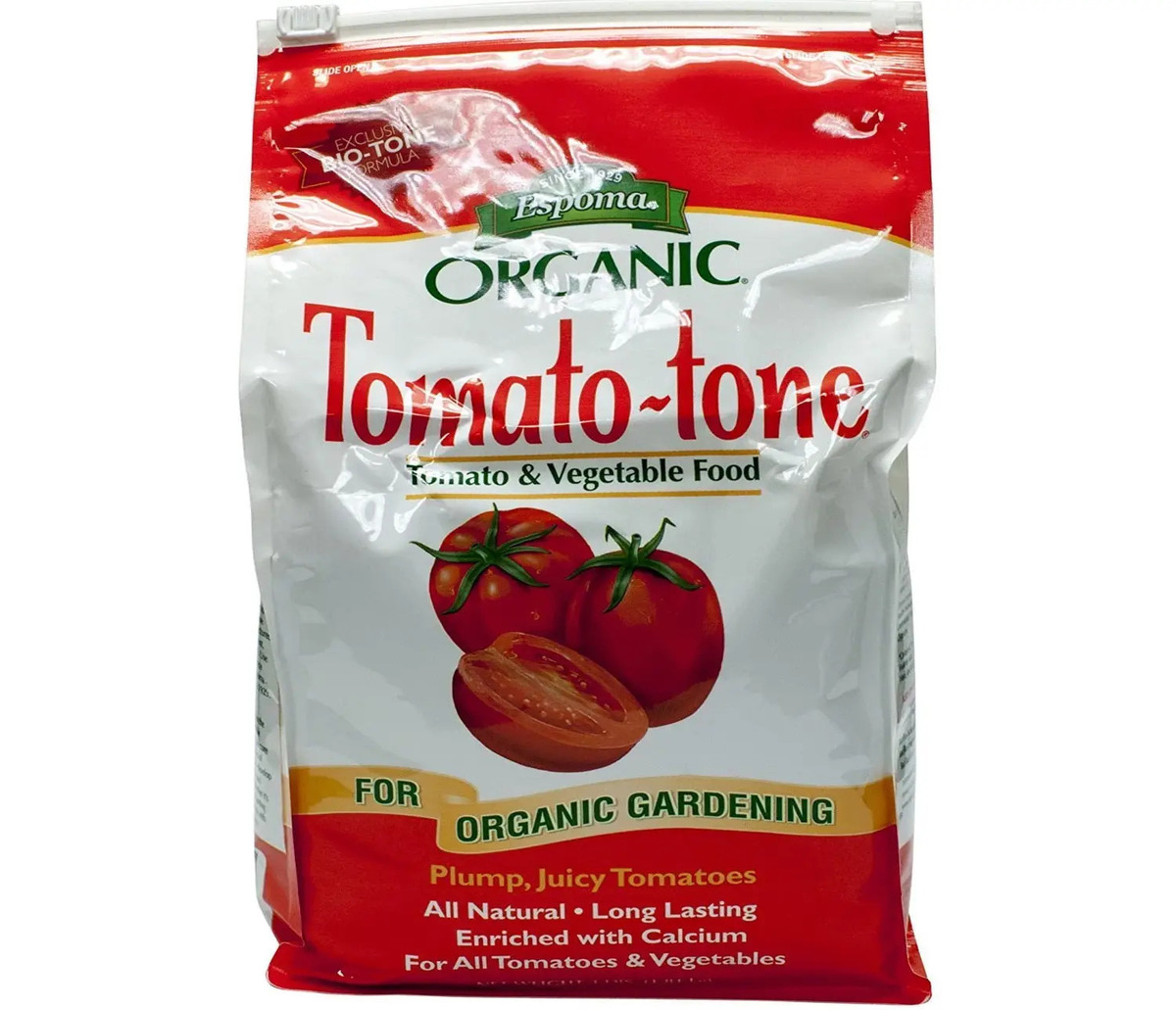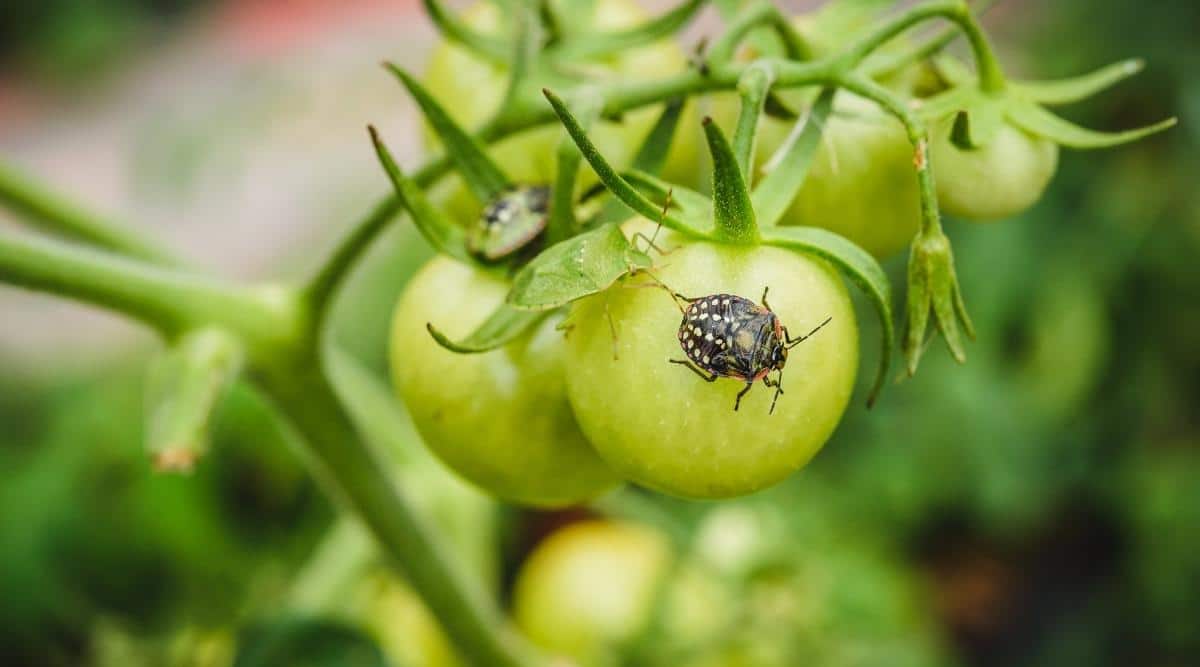Home>Gardening Tips and Tricks>Eco-Friendly Gardening>When To Fertilize Tomatoes After Planting
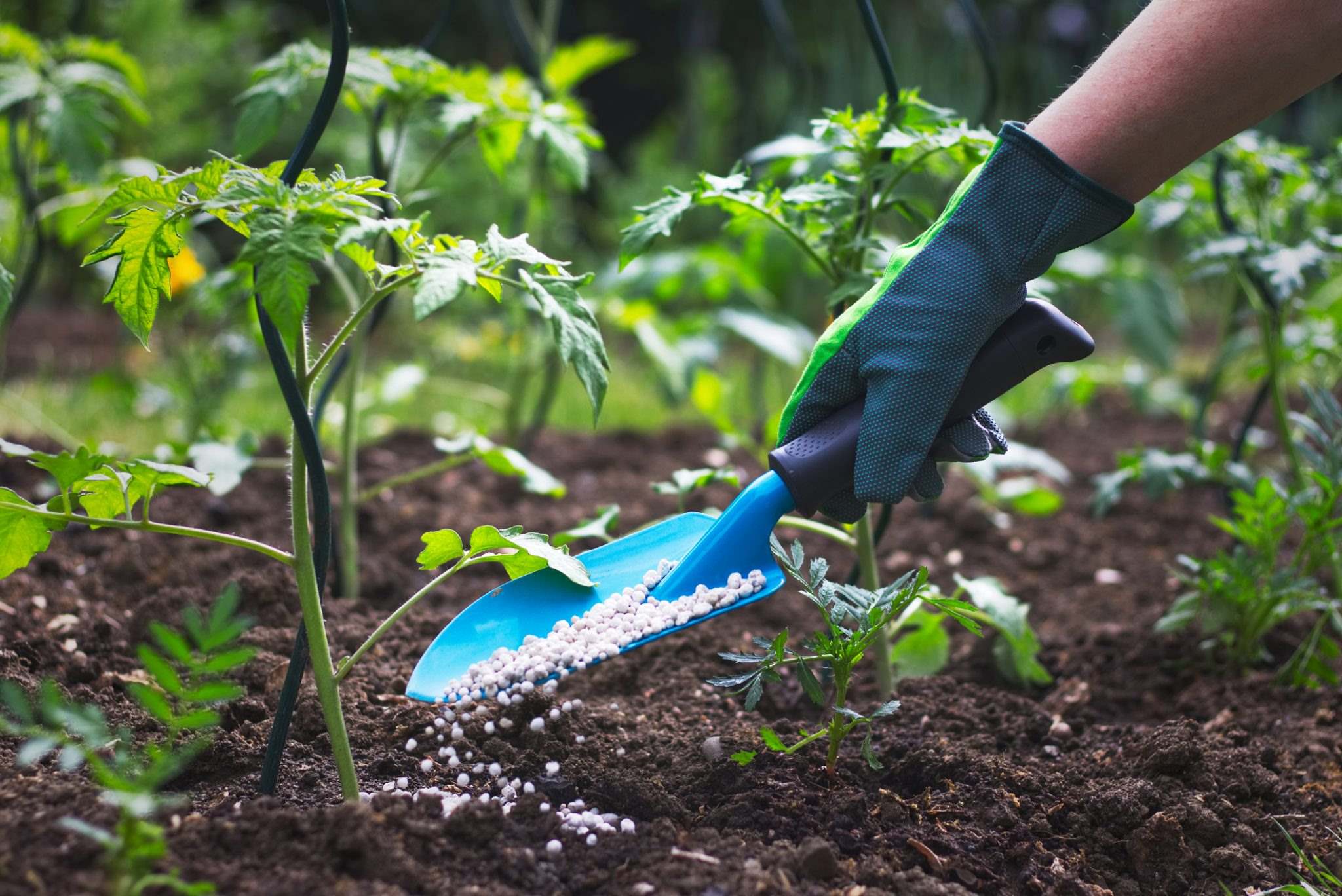

Eco-Friendly Gardening
When To Fertilize Tomatoes After Planting
Modified: January 22, 2024
Learn when to fertilize tomatoes after planting in this eco-friendly gardening guide. Find out the best timing for maximizing growth and yield.
(Many of the links in this article redirect to a specific reviewed product. Your purchase of these products through affiliate links helps to generate commission for Chicagolandgardening.com, at no extra cost. Learn more)
Table of Contents
Introduction
Welcome to the world of eco-friendly gardening! Growing your own vegetables, herbs, and fruits can be a rewarding experience. Not only does it allow you to enjoy fresh, organic produce, but it also contributes to a healthier environment. In this article, we will focus on one particular crop – tomatoes, and specifically, when to fertilize them after planting.
Tomatoes are a popular choice among gardeners, known for their delicious taste and versatility in various dishes. However, to ensure a bountiful harvest, it is crucial to provide these plants with the necessary nutrients they need to grow and thrive. That’s where fertilization comes in.
Fertilizing tomatoes is essential for their overall health and productivity. It helps to replenish the soil with essential minerals and nutrients, ensuring optimal growth, strong root development, and abundant fruit production. By providing the right balance of nutrients, you can help your tomato plants become more resistant to diseases, pests, and environmental stressors.
However, knowing the ideal time to fertilize your tomatoes is crucial. Applying fertilizer too early or too late in the growing season can have adverse effects on the plants. By understanding the factors that determine the timing for fertilization, you can ensure that your tomatoes receive the nutrients they need at the right time.
In this article, we will explore the factors that influence the timing of fertilizer application for tomatoes, discuss the signs of nutrient deficiency to look out for, and provide some eco-friendly fertilizer options. Additionally, we will guide you on how to apply fertilizer properly and offer some useful precautions and tips to maximize your tomato-growing success.
So, whether you’re a seasoned gardener or a beginner, let’s dive into the world of eco-friendly tomato fertilization and discover the optimal time to give your plants the nutrient boost they need. Up next, we’ll explore the essential factors to consider when determining the right time for fertilization after planting.
Importance of Fertilizing Tomatoes
Fertilizing tomatoes plays a crucial role in the overall health and productivity of these plants. As heavy feeders, tomatoes require a steady supply of nutrients to support their growth, flower formation, and fruit development.
One of the primary benefits of fertilizing tomatoes is ensuring optimal nutrient availability in the soil. While it is true that tomatoes can grow in relatively nutrient-poor soil, providing them with a well-balanced fertilizer helps to replenish any deficiencies and promotes vigorous growth. The nutrients most essential for tomato plants include nitrogen (N), phosphorus (P), and potassium (K), often referred to as NPK. These three macronutrients are vital for various physiological processes in plants, such as photosynthesis, root development, and fruit production.
Fertilizing also helps to improve the overall quality of the tomato fruit. The correct nutrient balance promotes larger fruit size, vibrant color, and enhanced taste. By supplying the appropriate nutrients at the right time, you can contribute to the development of flavorful, juicy tomatoes that are a delight to eat.
Furthermore, fertilization plays a critical role in disease resistance. Well-nourished tomato plants are more robust and better equipped to withstand common diseases and pests. By providing the necessary nutrients, you can strengthen the plants’ immune system, enabling them to better fight off pathogens and recover from stressors, ultimately leading to a healthier, more productive crop.
Another advantage of fertilizing tomatoes is the ability to regulate plant growth. While excessive growth can result in tall, spindly plants that are more susceptible to diseases and less productive, insufficient nutrition can lead to stunted growth and reduced fruit production. By carefully managing the fertilizer application, you can strike a balance and promote a well-structured, productive tomato plant.
In summary, fertilizing tomatoes is crucial for their overall health, productivity, and fruit quality. It ensures the availability of essential nutrients, promotes disease resistance, and regulates plant growth. With the right combination of nutrients provided at the appropriate time, you can enjoy healthy, flavorful tomatoes straight from your garden. Now that we understand the importance of fertilizing tomatoes, let’s explore the factors that need to be considered when determining the right time to apply fertilizer after planting.
Factors to Consider
Determining the right time to fertilize your tomatoes after planting involves considering several factors that can impact the nutrient needs of the plants. By taking these factors into account, you can optimize the timing of fertilizer application and provide your tomatoes with the necessary nutrients when they need them the most.
1. Planting Stage: The stage at which you fertilize your tomatoes depends on whether you are starting from seeds or transplants. If you are starting from seeds, it’s important to wait until the seedlings have developed true leaves before applying fertilizer. For transplants, it is ideal to wait until they have established their root systems in the new soil before fertilizing.
2. Soil Conditions: Understanding the nutrient composition and pH level of your soil is essential. Conducting a soil test can provide valuable insights into which nutrients may be lacking and help you determine the appropriate fertilizer ratios. Tomatoes generally prefer slightly acidic soil with a pH range of 6.0 to 6.8.
3. Plant Size and Growth: The size and growth rate of your tomato plants can also influence the timing of fertilization. Generally, small, newly planted seedlings require minimal fertilization until they have established themselves. As the plants mature and grow larger, their nutrient demands increase, and regular fertilization becomes necessary.
4. Environmental Factors: Consider environmental conditions like temperature, rainfall, and sunlight. Warmer temperatures and increased sunlight can accelerate plant growth and nutrient uptake, requiring more frequent fertilization. Additionally, heavy rainfall or excessive watering can leach nutrients from the soil, making it essential to replenish them regularly.
5. Fertilizer Type: Different types of fertilizers have varying release rates and durations. Slow-release fertilizers provide a gradual and continuous supply of nutrients over an extended period, reducing the need for frequent applications. Water-soluble fertilizers, on the other hand, provide a quick nutrient boost but may require more frequent application.
By considering these factors, you can determine the optimal time to fertilize your tomatoes after planting. It’s important to adjust your fertilization schedule throughout the growing season to meet the evolving nutrient requirements of your plants. Now that we have discussed the factors to consider, let’s delve into the specific guidelines for determining the right timing for your tomato fertilization.
Determining the Right Time
Determining the right time to fertilize your tomatoes involves considering the stage of growth, soil conditions, and the specific needs of your plants. Following these guidelines will ensure that your tomatoes receive the nutrients they require at the appropriate times, promoting optimal growth and fruit production.
1. Seedling Stage: If you are starting your tomatoes from seeds, it is recommended to wait until the seedlings have developed their first set of true leaves before applying fertilizer. At this stage, they will have a more developed root system, allowing them to uptake nutrients more efficiently.
2. Transplant Stage: If you are planting tomato transplants, it’s best to allow them a few days to establish their root systems in the new soil before fertilizing. This will help prevent any potential root burn and ensure the plants are ready to absorb the nutrients.
3. Early Growth Stage: Once the tomato plants have established themselves, usually around 4-6 weeks after planting, it is time for the first application of fertilizer. Use a balanced fertilizer with equal amounts of nitrogen, phosphorus, and potassium (NPK), such as a 10-10-10 or 14-14-14 formulation. Apply the fertilizer according to the package instructions, taking care not to over-fertilize, as this can lead to excessive foliage growth at the expense of fruit production.
4. Mid to Late Growth Stage: As the tomato plants continue to grow, they will require additional nutrients to sustain their development and fruit production. Apply a side dressing of fertilizer around the base of the plants, keeping it a few inches away from the stems. Again, use a balanced fertilizer or consider switching to a formulation higher in phosphorus, such as a 5-10-10 or 10-20-20 blend. Repeat this application every 4-6 weeks throughout the growing season.
5. Pre-bloom and Fruit Setting Stage: When the tomato plants start to flower and set fruit, it is essential to provide them with a boost of phosphorus and potassium. These nutrients are crucial for promoting flower formation and fruit quality. Consider using a fertilizer high in phosphorus and potassium, such as a 0-20-20 or 5-10-10 blend. Apply this fertilizer once the first flowers appear and repeat every 2-3 weeks.
By following these guidelines, you can ensure that your tomatoes receive the appropriate nutrients at each stage of their growth. Remember to monitor your plants closely and adjust the fertilization schedule based on their specific needs. With proper timing and nutrition, your tomatoes will flourish and reward you with a bountiful harvest.
After Planting Care
After planting your tomatoes, it is crucial to provide them with proper care to ensure their healthy growth and maximize fruit production. Paying attention to watering, pruning, and pest control will help your plants thrive and will complement the fertilization process.
1. Watering: Tomatoes require consistent moisture throughout their growth cycle. Water deeply but infrequently, allowing the soil to dry slightly between watering. Avoid overhead watering, as it can increase the risk of fungal diseases. Instead, direct the water at the base of the plants, aiming for the root zone.
2. Mulching: Mulching around the base of your tomato plants has numerous benefits. It helps conserve soil moisture, suppresses weed growth, moderates soil temperature, and adds organic matter to the soil as it breaks down. Use organic mulch like straw, dried leaves, or wood chips, and apply it in a layer of 2-3 inches thick.
3. Pruning: Regular pruning helps improve air circulation and reduces the risk of diseases. Remove any suckers that grow in the leaf axils, as they can divert energy away from fruit production. Also, remove any lower leaves that come into contact with the soil, as they can contribute to the spread of soil-borne diseases.
4. Stake or Cage Support: Tomato plants benefit from support to keep them upright and to prevent branches from breaking under the weight of the fruit. Use stakes or cages to provide support and help the plants grow in an upright position. This also encourages good air circulation and allows sunlight to reach all parts of the plant.
5. Pest Control: Monitor your tomato plants regularly for any signs of pests or diseases. Aphids, tomato hornworms, and fungal diseases like blight can all pose a threat to your plants. Use organic pest control methods, such as handpicking insects, applying insecticidal soap or neem oil, and using companion plants to deter pests. Early detection and intervention are key to preventing the spread of pests and diseases.
By following these after-planting care practices, you can create an optimal environment for your tomatoes to grow and thrive. These practices, along with proper fertilization, will contribute to healthy plants, higher yields, and flavorful fruits. Now that we’ve covered the crucial after-planting care, let’s explore the signs of nutrient deficiency in tomatoes and how to address them.
Signs of Nutrient Deficiency
Identifying signs of nutrient deficiency in your tomato plants is crucial for addressing any nutrient imbalances and ensuring their optimal health and productivity. Here are some common signs to look out for:
1. Nitrogen Deficiency: When tomato plants lack nitrogen, their leaves turn pale or yellow, starting from the bottom of the plant and progressing upwards. The growth of the plants may also be stunted, and they may produce fewer flowers and fruits.
2. Phosphorus Deficiency: A phosphorus deficiency in tomato plants can cause slow or stunted growth, dark-green foliage, and purple discoloration on the leaves. The plants may also produce fewer flowers and have reduced fruiting.
3. Potassium Deficiency: Tomato plants deficient in potassium may display yellowing and necrosis on leaf edges and tips. The leaves may also appear scorched or burned. Additionally, potassium deficiency can lead to poor fruit quality and reduced shelf life.
4. Calcium Deficiency: A calcium deficiency in tomatoes can cause a condition known as blossom end rot, where the bottom of the fruit develops a dark, sunken spot. This deficiency is often attributed to inconsistent moisture levels or poor calcium uptake in the plants.
5. Magnesium Deficiency: Magnesium deficiency can manifest as yellowing between leaf veins while leaving the veins themselves green. This condition, known as interveinal chlorosis, can affect the plant’s ability to photosynthesize effectively.
When you observe any of these signs of nutrient deficiency, take corrective action promptly. Conduct a soil test to identify specific nutrient deficiencies and adjust your fertilization routine accordingly. Organic amendments such as compost, bone meal, or fish emulsion can help replenish nutrients in a more gradual and sustainable manner.
Remember that nutrient deficiencies can be influenced by various factors, including soil pH, temperature, and overall plant health. Proper care, including adequate watering, pest control, and maintaining optimal soil conditions, can help prevent nutrient deficiencies from occurring in the first place.
By being vigilant and addressing nutrient deficiencies promptly, you can ensure that your tomato plants receive the necessary nutrients they need to flourish, resulting in healthy growth, abundant fruit production, and a bountiful harvest. Now that we have covered signs of nutrient deficiency, let’s explore some common fertilizer options for your eco-friendly gardening practices.
Common Fertilizer Options
When it comes to fertilizing your tomatoes, there are several eco-friendly options available that provide the necessary nutrients for healthy plant growth. By choosing the right fertilizer, you can enhance the soil fertility and support optimal development and fruit production in your tomato plants.
1. Organic Compost: Compost is a fantastic natural fertilizer option that enriches the soil with a wide range of nutrients, promotes microbial activity, improves soil structure, and enhances moisture retention. You can create your own compost by composting kitchen scraps, yard waste, and other organic materials. Apply a layer of compost around the base of your tomato plants, incorporating it into the topsoil gently.
2. Organic Manure: Animal manure, such as cow or horse manure, is another effective organic fertilizer rich in nutrients. It provides a slow-release source of nitrogen, phosphorus, and potassium. Make sure the manure is well-rotted and has undergone proper composting to prevent any potential issues with pathogens. Apply a thin layer of manure around the base of the plants and mix it into the soil.
3. Fish Emulsion: Fish emulsion is a nutrient-rich liquid fertilizer made from fish waste. It is an excellent source of nitrogen, phosphorus, and trace minerals. Dilute fish emulsion according to the instructions on the packaging and apply it to the soil around the tomato plants. This organic fertilizer is fast-acting and can provide a quick nutrient boost.
4. Alfalfa Meal: Alfalfa meal is a natural fertilizer made from dried alfalfa leaves and stems. It contains a good amount of nitrogen, phosphorus, and potassium, along with other beneficial nutrients. Apply a layer of alfalfa meal around the base of the tomato plants and gently work it into the soil.
5. Seaweed Extract: Seaweed is a rich source of micronutrients, growth hormones, and beneficial bacteria that have a positive impact on plant growth. Seaweed extract can be applied as a foliar spray or diluted and applied to the soil. It enhances root development, improves plant vigor, and boosts overall resistance to diseases and stressors.
Remember to follow the application instructions provided by the manufacturer for each organic fertilizer option. Regular application throughout the growing season will help maintain a steady supply of nutrients for your tomato plants.
Choosing eco-friendly fertilizer options not only benefits your plants but also promotes sustainability and environmental consciousness in your gardening practices. Now that we have explored some common organic fertilizer choices, let’s move on to the proper application methods for fertilizing your tomatoes.
Applying Fertilizer Properly
Applying fertilizer properly is essential to ensure that your tomato plants receive the right nutrients in the right quantities. Here are some guidelines to follow for the proper application of fertilizer:
1. Read the Instructions: Before applying any fertilizer, carefully read and follow the instructions provided by the manufacturer. Different fertilizers may have specific application rates and frequency recommendations.
2. Apply at the Base: When applying fertilizer, avoid direct contact with the plant foliage. Instead, aim to apply the fertilizer at the base of the plants, a few inches away from the stems. This prevents the risk of burning the leaves and stems.
3. Avoid Over-fertilizing: It’s crucial not to over-fertilize your tomato plants. Excessive nutrients can lead to excessive foliage growth at the expense of fruit production. Follow the recommended application rates and avoid applying more fertilizer than necessary.
4. Water Properly: After applying fertilizer, water the plants thoroughly. This helps to distribute the nutrients into the soil and encourages their absorption by the plant roots. Watering also prevents any potential fertilizer burn and helps prevent nutrient leaching.
5. Apply in Split Doses: For long-growing tomato varieties, consider applying fertilizer in split doses. This means dividing the total required amount of fertilizer into multiple applications throughout the growing season. This approach ensures a steady supply of nutrients without overwhelming the plants.
6. Consider Foliar Feeding: Alongside soil application, foliar feeding can be beneficial for tomato plants. Spray a liquid fertilizer solution directly onto the plant leaves, allowing them to absorb nutrients through their stomata. This method can provide a quick nutrient boost when necessary, especially during periods of increased plant stress.
Remember to adjust your fertilization schedule based on the specific needs of your tomato plants. Factors like plant size, growth rate, and environmental conditions can influence nutrient requirements. Regularly monitor your plants for signs of nutrient deficiency or excess, and make necessary adjustments to your fertilization routine.
By applying fertilizer properly, you can ensure that your tomato plants receive the necessary nutrients to support their growth, flower formation, and fruit development. Next, we will discuss some precautions and tips to keep in mind when fertilizing your tomatoes.
Precautions and Tips
When fertilizing your tomatoes, it’s important to take certain precautions and keep some useful tips in mind. These will help ensure the safety of your plants, promote optimal growth, and minimize any potential risks:
1. Avoid Over-fertilization: Over-fertilization can harm your tomato plants and lead to excessive foliage growth at the expense of fruit production. Follow the recommended application rates and avoid applying more fertilizer than necessary.
2. Timing is Key: Fertilize your tomato plants at the appropriate stages of growth. Applying fertilizer too early or too late in the season can disrupt the plants’ natural growth patterns and result in reduced productivity.
3. Use Organic Fertilizers: Consider using organic fertilizers, as they are more environmentally friendly and sustainable. Organic options like compost, manure, and fish emulsion provide slow-release nutrients and improve soil health over time.
4. Follow Label Instructions: Read and follow the instructions on the fertilizer packaging carefully. Each product may have specific application rates, timings, and precautions that need to be adhered to.
5. Test and Amend Your Soil: Regularly test your soil to understand its nutrient composition and pH level. Based on the results, amend the soil with organic matter or specific nutrients to maintain a healthy balance for optimal plant growth.
6. Rotate Crops: Avoid planting tomatoes in the same spot year after year. Crop rotation helps prevent the buildup of diseases and pests specific to tomatoes and reduces the risk of nutrient depletion in the soil.
7. Water Wisely: Provide adequate water to your tomato plants, but avoid overwatering as it can lead to nutrient leaching and root rot. Water deeply and infrequently, allowing the soil to dry out slightly between watering sessions.
8. Monitor Pest Activity: Keep a close eye on your tomato plants for any signs of pests or diseases. Early detection and intervention can prevent infestations and minimize the need for chemical interventions.
9. Consider Companion Planting: Certain companion plants, like basil, marigold, and borage, can help deter pests and improve the overall health of your tomato plants. Plant these companions alongside your tomatoes to create a natural pest-control system.
10. Practice Proper Hygiene: Regularly clean your gardening tools to prevent the spread of diseases between plants. Dispose of any diseased plant material properly to avoid contaminating your garden.
Taking these precautions and following these tips will help you maintain healthy tomato plants and promote a successful harvest. By being proactive and mindful in your gardening practices, you can ensure the best possible results. Now, let’s conclude our journey through eco-friendly tomato fertilization.
Conclusion
Growing tomatoes in an eco-friendly and sustainable manner not only benefits your garden but also contributes to a healthier environment. By understanding the importance of fertilizing tomatoes, determining the right time for application, and practicing proper after-planting care, you can promote optimal growth, abundant fruit production, and flavorful tomatoes.
Remember to consider factors such as planting stage, soil conditions, plant size, and environmental factors when determining the timing for fertilization. By providing the necessary nutrients at the right time, you can ensure that your tomato plants have the resources they need to thrive.
Identifying signs of nutrient deficiency and addressing them promptly is crucial for maintaining healthy plants. By choosing organic fertilizers, such as compost, manure, or fish emulsion, you can nourish your plants while minimizing environmental impact.
Applying fertilizers properly, watering consistently, mulching, and practicing good hygiene will further support the growth and productivity of your tomato plants. Remember to follow precautions, such as avoiding over-fertilization, and implement helpful tips, like crop rotation and companion planting, for optimal results.
By following these guidelines and being proactive in your gardening practices, you can enjoy the satisfaction of growing your own eco-friendly tomatoes. So roll up your sleeves, dig in the soil, and embrace the joy of eco-friendly gardening while nurturing your delicious, homegrown tomatoes.
